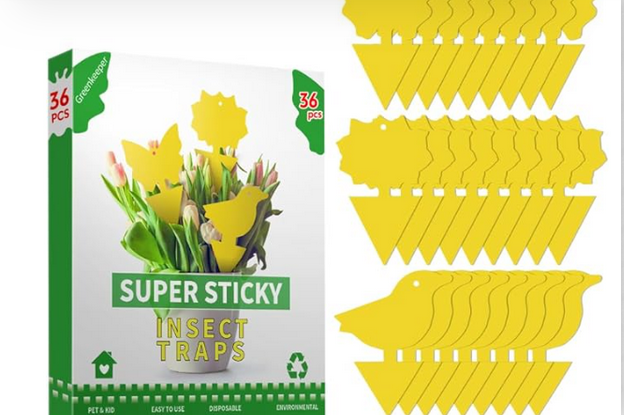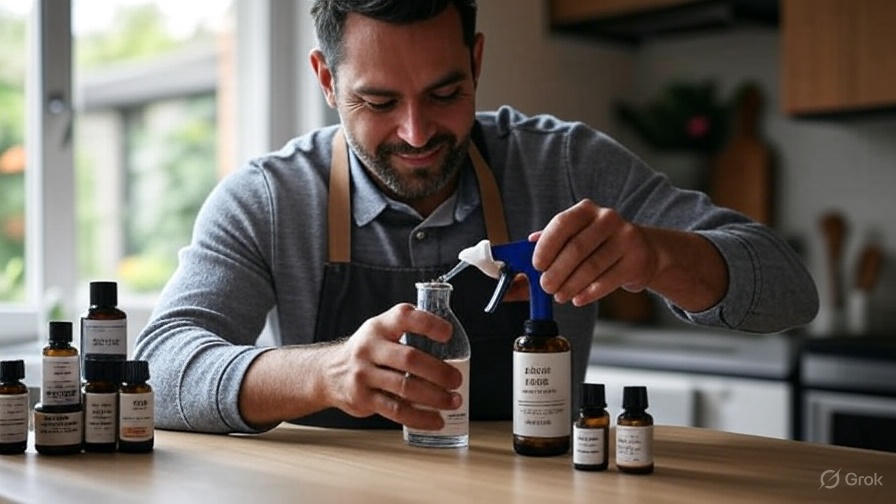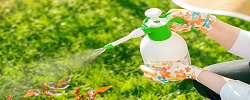
As a dedicated gardener, I’ve encountered my fair share of challenges, and my lemon tree is a testament to that journey. This sad-looking tree has been with me for over a decade, enduring everything from accidental damage to improper overwintering attempts. Despite my efforts, maintaining citrus trees indoors during the colder months has proven difficult. They need more light and warmth than I can provide in my cellar, leading to rapid declines in their health if I overwater them. The struggle to keep these plants thriving is ongoing, but I’ve learned to adapt and find solutions along the way.
One persistent issue I’ve faced is the invasion of fungus gnats. These tiny pests are not only harmful to my plants but also incredibly annoying as they seem to gravitate toward my face, especially when I’m working on my computer. To combat this, I recently purchased yellow sticky traps from Amazon, designed specifically for potted plants. These traps have a butterfly shape purely for aesthetic purposes, as it’s the yellow color that effectively attracts the gnats. I placed one of these traps near my lemon tree, and within a short period, it began capturing multiple gnats, proving their effectiveness.
In just a few days, the difference was noticeable. My initial trap caught over a dozen fungus gnats, and I haven’t seen them flying around indoors since. This success has prompted me to consider placing additional traps in other pots and possibly in my seed starter trays if another outbreak occurs. The simplicity and efficiency of these pesticide-free sticky traps have made them a valuable tool in my gardening arsenal. It’s a relief to see my plants free from pests and thriving once again, reaffirming my commitment to organic and sustainable gardening practices.
Key Features
Attractive Color: Most fungus gnat traps are yellow, which is particularly effective in attracting these insects. The yellow color helps to lure gnats and other flying pests, making the traps more efficient.
Non-Toxic: These traps typically do not contain pesticides, making them safe for use around children and pets. They provide a chemical-free method to control pest populations in indoor plants
Easy to Use: The traps come with simple instructions for setup. Users can attach them to plants or place them in the soil, and they often include twist ties for hanging
Durability: Many traps are designed to last for several months, providing long-term pest control without frequent replacements. For instance, some products claim effectiveness for up to three months
Variety of Sizes: Sticky traps are available in various sizes and shapes to accommodate different plant types and pot sizes, ensuring versatility in application.
Multi-Purpose: Besides fungus gnats, these traps can also capture other pests such as whiteflies and aphids, making them a multi-functional tool for indoor gardening.

Customer review
A Battle with the Fungus Gnats: My Sticky Trap Victory
The war against the tiny invaders started unexpectedly. One evening, while watering my beloved houseplants, I noticed a small cloud of fungus gnats rising from the soil. My serene plant haven had turned into a battlefield overnight.
Desperation drove me to seek solutions. That’s when I stumbled upon the sticky trap, a seemingly simple yet highly recommended weapon in the war against gnats. The reviews were glowing, promising a gnat-free home in no time. It sounded too good to be true, but I had to try.
When the package arrived, I was eager to get started. The sticky traps were bright yellow, designed to attract and capture the gnats. Setting them up was straightforward—peel off the protective paper and insert them into the soil near the affected plants. The vibrant color was surprisingly appealing, adding a pop of brightness to my indoor jungle.
With the traps in place, it was time to wait. Every now and then, I’d glance at the plants, hoping to see fewer gnats. The traps worked silently, without any fuss. I was skeptical at first, but the reviews assured me it would be effective.
The next morning, I approached my plants with cautious optimism. To my delight, the traps were already speckled with captured gnats. It was a small but satisfying victory. Over the next few days, the number of gnats dwindled significantly. The traps were doing their job, and my home was gradually returning to its peaceful state.
One of the top reviews mentioned an unexpected benefit: the traps also caught other pesky insects that occasionally found their way indoors. Sure enough, I noticed a few fruit flies and other small bugs stuck to the traps. It was an added bonus I hadn’t anticipated.
The sticky traps proved to be more than just a quick fix; they were a long-term solution. They continued to catch gnats and other pests, keeping my plants healthy and my home gnat-free. The simplicity and effectiveness of the traps were impressive, living up to the rave reviews I’d read.
In my battle against the fungus gnats, the sticky traps were the heroes. They turned the tide, restoring peace to my plant sanctuary. If you’re struggling with gnats or other small pests, these traps are a must-have. They work quietly and efficiently, giving you back the joy of a gnat-free home.
The sticky traps taught me that sometimes, the simplest solutions are the best. Now, I can enjoy my plants without the constant annoyance of gnats, all thanks to these little yellow wonders.

Key takeaways
- Fungus gnats are annoying and tend to fly in front of faces.
- Yellow sticky traps are effective with several gnats already caught.
- Yellow color attracts pests; possibly no scent involved.
- Yellow sticky traps are pesticide-free and suitable for organic gardening.
- Update after five days showing many gnats caught on traps.
- No noticeable gnats indoors since using the traps.
- Gnats might accumulate on the sunny side of the house and get trapped.
- Plan to use sticky traps in seed starter trays if an outbreak occurs.
What is the Fungus Gnat Sticky Trap?
As an avid gardener, I’ve had my share of battles with pests, and fungus gnats have been a persistent enemy. To tackle this problem, I discovered the yellow sticky trap. These traps are simple yet highly effective glue traps designed specifically to attract and capture fungus gnats. The traps I use are shaped like butterflies, but it’s the yellow color that does the trick, drawing in the gnats and sticking them to the trap. They are pesticide-free, making them a safe choice for organic gardening.
The Secret is to Break the Cycle
Fungus gnats can be incredibly frustrating because they multiply quickly and can infest your entire indoor garden. The secret to controlling them lies in breaking their life cycle. Fungus gnats lay their eggs in the moist soil of your plants, and the larvae feed on organic matter and roots. By using sticky traps, I can capture the adult gnats before they have a chance to lay more eggs, effectively interrupting the cycle and reducing their population over time.
Why Do Yellow Sticky Traps Get Rid of Fungus Gnats?
Yellow sticky traps are effective because fungus gnats are naturally attracted to the color yellow. The traps use this attraction to lure the gnats in, where they become stuck to the adhesive surface and cannot escape. Some traps might also use a scent to enhance their effectiveness, but in my experience, the color alone is enough to capture a significant number of gnats.
How Should You Use Yellow Sticky Traps to Kill Fungus Gnats?
Using yellow sticky traps is straightforward. I place them near my potted plants, especially those that seem to be most affected by fungus gnats. It’s important to position the traps close to the soil surface, where adult gnats are likely to fly. I also check the traps regularly to monitor their effectiveness and replace them as needed to ensure they remain sticky and continue to catch gnats.
How Long Do You Need to Keep Treating to Get Rid of Fungus Gnats?
The duration of treatment depends on the severity of the infestation. In my case, I noticed a significant reduction in fungus gnats within a few days of placing the traps. However, to completely break the life cycle and ensure all gnats are captured, I keep the traps in place for several weeks. Consistent monitoring and replacing of the traps are key to maintaining control over the gnat population.
Will the Fungus Gnats Come Back After Treatment?
While yellow sticky traps are highly effective, it’s possible for fungus gnats to return if conditions remain favorable for them. To prevent this, I take additional measures such as allowing the soil to dry out between waterings and removing decaying plant matter. These practices help create an environment that is less attractive to fungus gnats, reducing the likelihood of re-infestation.
Final Verdict
Yellow sticky traps have been a game-changer in my battle against fungus gnats. They are easy to use, pesticide-free, and highly effective at capturing adult gnats. By breaking the life cycle of these pests, I’ve been able to protect my indoor garden and keep my plants healthy. If you’re struggling with fungus gnats, I highly recommend giving these traps a try.
Where to Buy Fungus Gnat Sticky Traps?
I purchased my yellow sticky traps from Amazon, where there are plenty of options available. Look for traps specifically designed for potted plants and ensure they are pesticide-free if you are practicing organic gardening. With just a few clicks, you can have these effective traps delivered right to your door and start controlling your fungus gnat problem in no time.
Top 5 Fungus Gnat Sticky Traps
| Product | Description | Best For |
| Gideal Sticky Trap | Double-sided yellow sticky traps, non-toxic and UV resistant. | General use for indoor plants and gardens. |
| Safer Brand Sticky Stakes | Yellow sticky traps with stakes for easy placement in potted plants. | Targeted use in potted plants. |
| Catchmaster 963 Sticky Trap | Pre-baited, ready-to-use sticky traps with a large surface area. | Broad-spectrum insect control, including gnats. |
| Trappify Sticky Traps | Dual-sided traps with included stakes, waterproof and UV resistant. | High humidity environments and greenhouses. |
| Kensizer Dual-Sided Sticky Traps | Eco-friendly and waterproof sticky traps with included hangers. | Versatile use in both indoor and outdoor settings. |

Welcome to my pest control blog! I’m Dave Saunders, a seasoned pest management specialist with over 20 years of experience helping homeowners and businesses across the United States. My journey began in the sunny landscapes of California, where I honed my skills tackling a wide range of pests, from ants to spiders. Over the years, I’ve expanded my expertise to Florida and numerous other states, adapting to diverse climates and pest challenges.
With a deep passion for eco-friendly solutions, I’ve dedicated my career to providing practical, safe, and effective pest control methods. Whether it’s crafting natural repellents or sharing integrated pest management strategies, my goal is to empower you with the knowledge to maintain a pest-free home. Join me as I share insights from two decades in the field!
